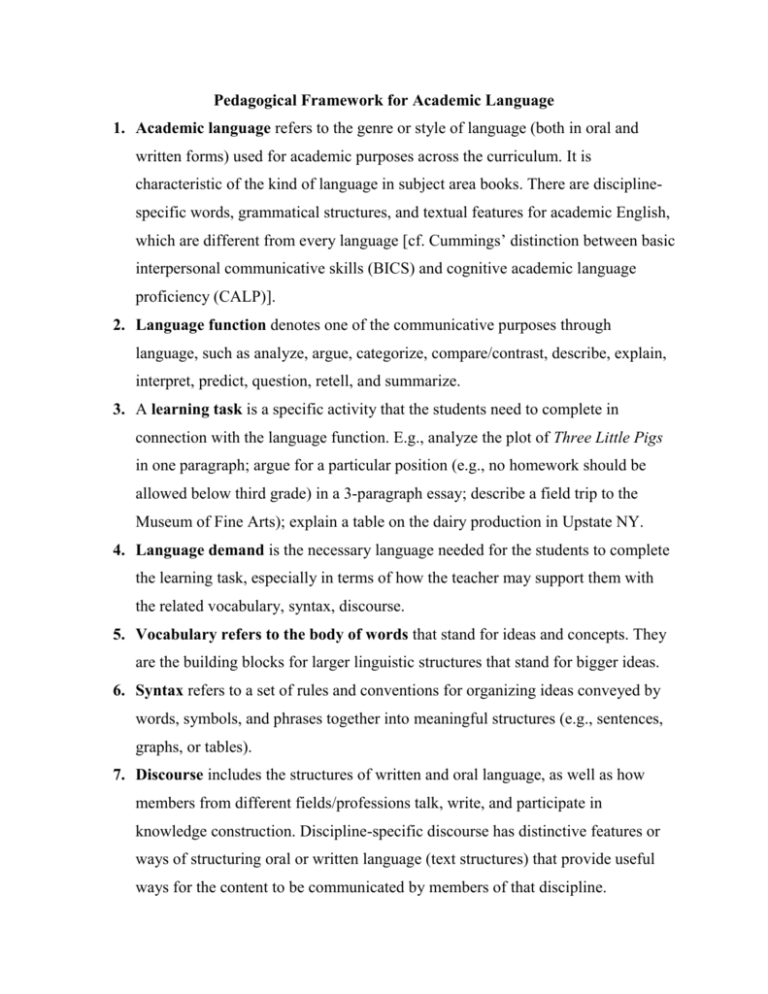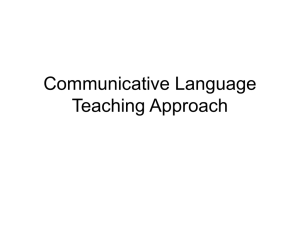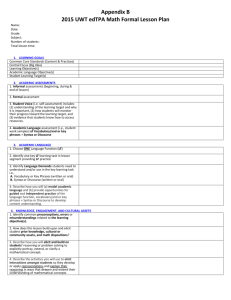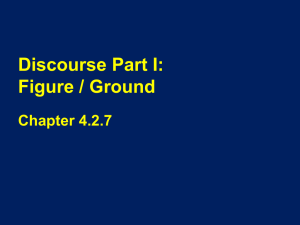Pegagogical Framework of Academic Language
advertisement

Pedagogical Framework for Academic Language 1. Academic language refers to the genre or style of language (both in oral and written forms) used for academic purposes across the curriculum. It is characteristic of the kind of language in subject area books. There are disciplinespecific words, grammatical structures, and textual features for academic English, which are different from every language [cf. Cummings’ distinction between basic interpersonal communicative skills (BICS) and cognitive academic language proficiency (CALP)]. 2. Language function denotes one of the communicative purposes through language, such as analyze, argue, categorize, compare/contrast, describe, explain, interpret, predict, question, retell, and summarize. 3. A learning task is a specific activity that the students need to complete in connection with the language function. E.g., analyze the plot of Three Little Pigs in one paragraph; argue for a particular position (e.g., no homework should be allowed below third grade) in a 3-paragraph essay; describe a field trip to the Museum of Fine Arts); explain a table on the dairy production in Upstate NY. 4. Language demand is the necessary language needed for the students to complete the learning task, especially in terms of how the teacher may support them with the related vocabulary, syntax, discourse. 5. Vocabulary refers to the body of words that stand for ideas and concepts. They are the building blocks for larger linguistic structures that stand for bigger ideas. 6. Syntax refers to a set of rules and conventions for organizing ideas conveyed by words, symbols, and phrases together into meaningful structures (e.g., sentences, graphs, or tables). 7. Discourse includes the structures of written and oral language, as well as how members from different fields/professions talk, write, and participate in knowledge construction. Discipline-specific discourse has distinctive features or ways of structuring oral or written language (text structures) that provide useful ways for the content to be communicated by members of that discipline.











